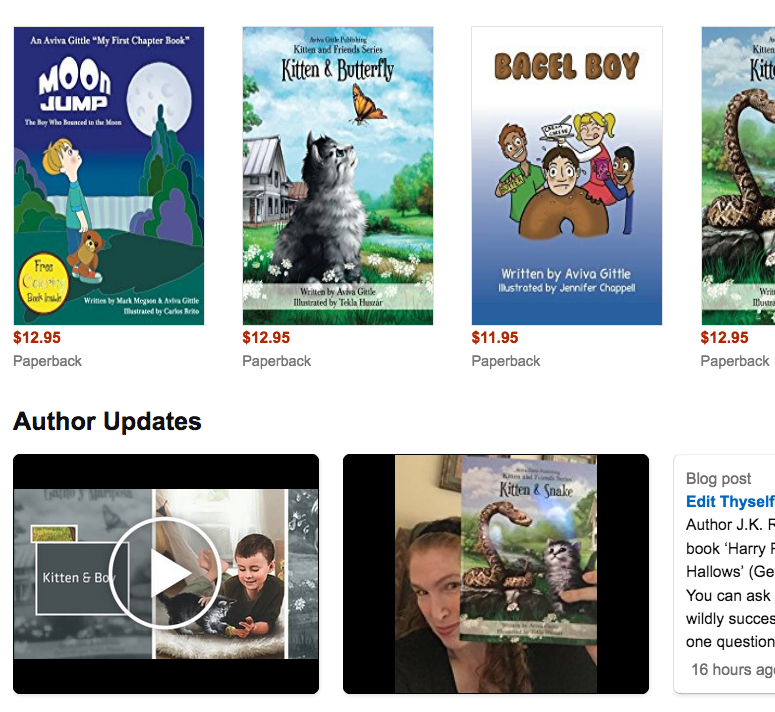
How do you market your books? It is a question that indie authors ask all the time. There are so many different ways to promote your work — and tons of books and articles on the topic — that authors get overwhelmed. “Just tell us what works for you,” they seem to be saying.
The marketing techniques you use are unique to you. Your personality, your technical skill level, your budget, the amount of time you can devote to it. There is no one way. There is no system. There are, however, basic building blocks that every author who wants to sell books needs. (See Helpful Resources below my bio.)
There are many different ways to market your book. Bookbub has an excellent list, 119 Book Marketing Ideas. You are not likely to do everything on this list (but feel free). It’s a list of ideas to consider in creating a marketing plan.
Every author needs a website. Unless you have a hyper-local marketing approach (I’ll explain this later), you must have a website. It doesn’t have to be fancy, but it does need to have a way to buy your books. This could be as simple as having a button that says “Buy” or “Shop” below a picture of the book’s cover and links to its detail page on an online store, like Amazon.
There are two ways to get a website: Hire someone to do it or build it yourself. From there, you can continue to pay someone to update the site as needed or you can have that person train you on the basics.
After getting bids from freelancers on what is now Upwork.com, I ended up finding someone local through Yelp. He charged $450 to build my website with WordPress using a theme I purchased online. (A theme is a framework that provides the web developer with a template for your website.) I knew that this price was reasonable after getting quotes generally between $1,200 and $5,000. (This was many years ago, but generally prices have remained the same or gone down.)
Work with someone locally, if you can. My website developer, Alejandro, and I were able to sit down together to discuss the functionality I needed (which I sketched out on paper). When he finished, he gave me basic training on how to add and change things on the website. (Take notes!)
Be sure to have an SOW (Statement of Work) that spells out what the web developer is going to do for you, in what time frame, and at what cost. It should specify how many revisions the developer is willing to do.

Stay away from development / design services like those offered by GoDaddy. First, they are very expensive. But, worse, GoDaddy considers the website they build for you “proprietary” and won’t allow you to move it to another hosting site. (I don’t know if other web hosting companies do this so be sure to ask.)
What is a hosting site, you ask? This is where your website files will reside. You can host your own website by buying and maintaining your own server. If you can do that, you can probably build your own website. I recommend WebHostingHub.com, but there are many others. You save a lot of money by paying for 1-3 years up front.
Here is the minimum you need:
- Front page that shows your books with a button below each one that links to the place readers can buy your books (like Amazon.com).
- An About page with your bio and a way to contact you.
- Links to your social media, like your Facebook page and Twitter account.
Get started with this. You can always add things later, like a signup form for a newsletter.
Hyper-Local Marketing is where you plan to build your reader base in or near your local community. This would include readings at local libraries, bookstores, and other local businesses. Part of your plan should be asking local businesses to carry your book. I think you should still have a website, but there are ways to take advantage of being online by leveraging other websites. This includes setting up your author business on Google My Business. (I’ll be writing an article soon that explains some specifics around hyper-local marketing.)
Last thing: You should take advantage of the free author page on Amazon.com. Here’s mine.
Think of your author website as the center of your marketing. Keep it simple and don’t let anyone talk you into more functionality than you need to get started. You can always expand it later. For now, give potential readers a place to buy your books and get to know you better. 😸
Follow me on Twitter or Facebook to be the first to hear about new articles on everything related to self-publishing. Have a topic you want me to write about? Email me at GoToGittle@gmail.com.
Other Aviva’s Advice articles: Edit Thyself? Is Your Book Global?
Aviva Gittle Publishing offers great stories for children in English and Spanish, including the Kitten and Friends / Gatito y amigos series. Aviva’s website, www.GoToGittle.com provides support to fellow indie children’s book authors through free children’s book reviews and helpful articles.
Helpful Resources
10 Tips for Working With Web Designers
Author Websites Must Have Elements

Be First to Comment